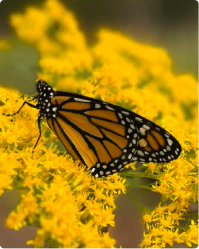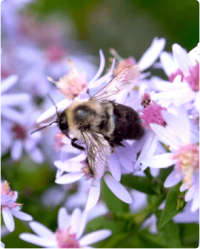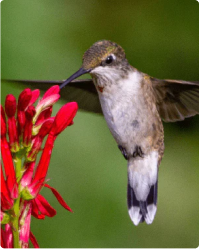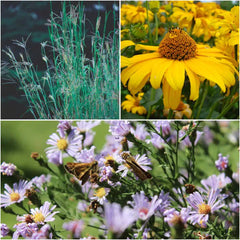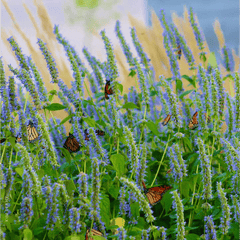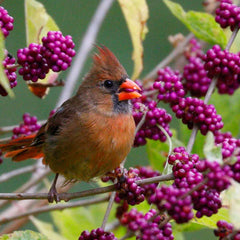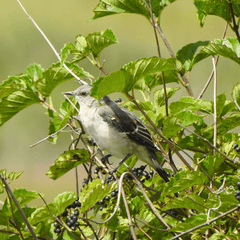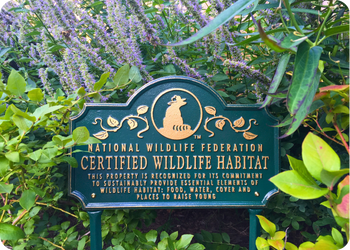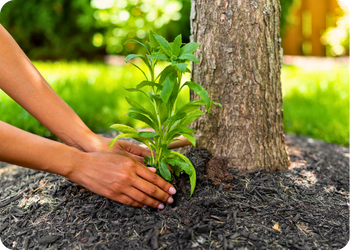- Shop All
- Plant Finder Quiz
- Collections
-
Regions
- Connecticut
- Maine
- Massachusetts
- New Hampshire
- New Jersey
- New York
- Pennsylvania
- Rhode Island
- Vermont
Northeast
- Alabama
- Arkansas
- Delaware
- District of Columbia
- Florida
- Georgia
- Kentucky
- Louisiana
- Maryland
- Mississippi
- North Carolina
- South Carolina
- Tennessee
- Virginia
- West Virginia
Southeast

View Map
- Habitats
- Wildlife
- Our Mission
- On Sale
- New
Learning Center
Come here for tips from our experts on gardening, native plants, the science behind it all, and more.

Plants That Attract Hummingbirds in New York
Keep reading
Seasonal Native Plant Care Calendar: Year-Round Guide to ...
Keep reading-
All Posts
-
Birds
-
how to
-
National Wildlife Federation
-
Native Plants
-
planting tips
-
Staff Spotlight
-
video
Subscribe to our newsletter
Signup for our newsletter to stay up to date on sales and events.
-
Guide to Dividing Native Plants: Tips, Techniques, and Benefits
Dividing them is a sustainable way to rejuvenate your garden, enhance its aesthetic appeal, and maintain the ecological balance.
Keep reading -
Best Native Berry Producing Shrubs: How to Attract More Wildlife to Your Garden
Many native shrubs provide visual interest throughout the year, even in the winter when flowers may not be in bloom. Their foliage, berries, and bark can add beauty and texture to your garden during all seasons. Careful planning ensures that there is a constant supply of food and visual interest throughout the year.
Keep reading -
Fall Flowers: Native Plants That Bloom and Thrive in Autumn
Fall is often underestimated as a planting season, overshadowed by the popularity of spring. However, there are several compelling reasons why autumn is an excellent time to introduce native plants into your garden
Keep reading -
Beyond Flowers: Enhancing Wildlife Gardens with Native Grasses
While colorful flowers often take center stage in these gardens, the importance of incorporating native grasses should not be underestimated. Native grasses play a crucial role in supporting diverse wildlife, from insects to birds and small mammals, and can be beautiful in when placed strategically in your landscape.
Keep reading -
Creating a Thriving Habitat: Supporting Frogs and Wildlife with a Native Plant Garden at Home
Different frog species have specific habitat requirements, and knowing which ones are native to your area will help you tailor your garden to their needs.
Keep reading -
What To Do If Your Native Plants Become Leggy
Under certain conditions this can sometimes lead to the development of slender and fragile stems and branches, as the rapid growth becomes concentrated at the tips.
Keep reading -
The Ultimate Guide to Native Plant Gardening
Get all the secrets of native plant gardening! Get tips on native plant garden design and create a thriving ecosystem for wildlife.
Keep reading -
The Dance of Nature: How Native Plants Sleep, Creep, and Leap Over Time
A lesson in patience: It’s the journey of many perennial native plants as they establish their roots, expand their presence, and ultimately flourish in their natural habitats.
Keep reading -
Detroit’s Marygrove Community Native Plant Gardens
For every plant sold on our website, we reserve one plant to be donated to a community garden or public space, doubling our collective impact on wildlife and the planet. One of our recent recipients was Detroit’s Marygrove Community Association. Many volunteers made light work of planting over 400 native Michigan plant
Keep reading -
Boost Your Garden's Buzz: Attracting Wild Bees with Native Plants
Native bees, like many other pollinators, face numerous threats, including habitat loss, pesticide use, climate change, and diseases. Conserving and protecting wild bee populations is essential for maintaining healthy ecosystems, sustainable agriculture, and the long-term well-being of our planet.
Keep reading -
Why HOAs Should Encourage Wildlife Gardening in Neighborhoods
In recent years, little by little across the country, restrictions on wildlife-friendly yards have begun to adapt to more modern, sustainable thinking.
Keep reading -
Broadway East Community Pollinator Garden in Baltimore, Maryland
On June 3, The 6th Branch, Broadway East Community Association, National Wildlife Federation and Garden for Wildlife came together on a sunny Saturday morning to help establish a community pollinator garden at corner of East Lanvale Street and North Port Street in East Baltimore, Maryland. Led by Dr. Doris Minor-Terrell of the Broadway East Community Association, local volunteers planted native plants and shrubs to...
Keep reading -
Transforming School Campuses with Native Plants & Wildflowers
Transform your campus landscaping with U.S.native plants. Explore the benefits and challenges of a native plant campus
Keep reading -
Wildlife Friendly Water Features
Attract wildlife with water features. Enhancing your garden and the local ecosystem. Get essential water feature tips here!
Keep reading -
The Ultimate Guide to Gardening in New York
Whether you’re looking for a tranquil place to relax or an energizing landscape for your family and friends, there’s something for everyone when it comes to gardening in the Empire State!
Keep reading -
The Ultimate Guide to Gardening in Pennsylvania
Whether you're looking to improve your green thumb, create a pollinator garden, or just want some new gardening ideas, read on and discover the joys of gardening in Pennsylvania!
Keep reading -
Q&A with Garden for Wildlife CEO Shubber Ali
In November, Garden for Wildlife welcomed a new CEO, Shubber Ali. We've seen Shubber profiled before, but we wanted to "dig" in a little more. QUESTION #1: What drew you most to you want to work with Garden for Wildlife? Well, considering I was involved in the creation of this business (it's the result of pro-bono work I did...
Keep reading -
Understanding the Sustainable Gardening Concept
Keep reading to learn more about sustainable gardening and how you can create your own sustainable garden!
Keep reading
Find out what's blooming.
Sign up for updates on new releases, sales, plant care tips, and more.
